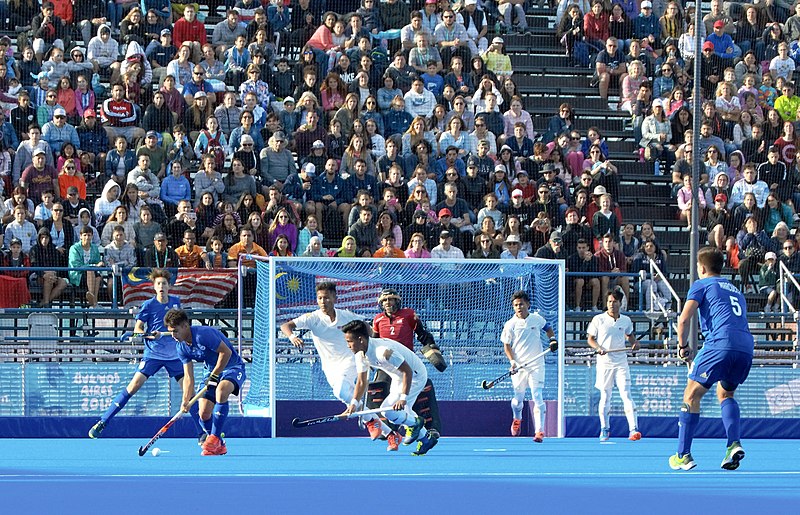There are things that hockey players like, then there are things that hockey players absolutely love. If you have any hockey players in your life, there’s a good chance that at some point or another you’ve heard them bring up synthetic ice, or maybe you’ve heard them call it artificial ice or something else entirely. In fact, in our own experience hockey players absolutely love this wonderful substance for many reasons, and the list of reasons only seems to continue to get longer and longer. If you know much about this topic, there’s a good chance that you understand why.
If you don’t know too much about artificial ice, there’s a good chance that it has you scratching your head every time it gets brought up in conversation. Worry not, we’re going to explain to you exactly what this marvelous stuff is and go over a few of the reasons why hockey players seem to love it so much. It’s rare that you see a product that both beginners and pros rant and rave about, but that’s exactly what artificial ice has been able to accomplish over the last few decades.
Understanding Exactly What Artificial Ice Is
Before being able to understand why hockey players seem to unanimously love artificial ice, it’s good to understand exactly what it is that we’re talking about. Before getting into the chemical composition of this kind of ice, it’s important to note that the kind of ice that we’re talking about isn’t made out of water. Both the titles synthetic and artificial ice bring up some confusion with people because it could be referring to water that is chemically treated to freeze, making it into ice that can be skated on. The ice we’re talking about today is nothing like that.
There has been some form of synthetic ice around for a long time. The first occurrence of it was in England, and the people that created it saw some short-lived success. They were able to open three different rinks at separate times and made a little chunk of money off of it. Unfortunately, the residents of England didn’t find the phenomenon of ice skating in the middle of the summer to be interesting enough for their ventures to last even a year. The two men that first invented artificial ice in this form went on to inspire everyone that came after.
Artificial ice is a surface that acts a lot like ice and can be skated upon with ice skates. They always come in interlocking tiles simply because that’s the easiest for everyone that buys it to use. When the artificial ice revival first began, manufacturers were using a substance called polyoxymethylene plastic to create their tiles. This worked but not without its issues. The tiles needed to be lubricated and cleaned often in order for them to function anything like real ice, but it was worth it to all ice skaters that wanted to skate outside of winter or in hotter states like Texas.
As time went on, research and development into the subject exploded. Currently, most of the artificial ice on the market is made up of one of two more chemically complicated substances, the first being high-density polyethylene, and the second being ultra-high-molecular-weight-polyethylene. Both of these substances make for some great artificial ice, and as time goes on it only gets closer and closer to feeling like you’re skating on the real thing. Even as you’re reading this article there are professionals out there working on finding a better and better experience for everyone that enjoys ice skating outside of winter.
On the Ice Practice Combined With Portability
Practice is something that no athlete can get enough of. Well, logically they can and definitely should take days off so their body can recover, but we digress. Practicing outside of winter is something that most hockey players find to be a little challenging, especially getting on the ice practice. It’s important for them to get practice while actually wearing their ice skates so they can be used to the way that they move on the ice, but in most parts of the country that’s either difficult or expensive.
Ice skating rinks are one solution that many hockey players have to make sure that they have somewhere to practice, but admissions to these rinks do cost money and the ticket prices add up even if you’re just going weekly. Unless you’re a professional or just rich from some other means, you probably don’t have it in your budget to go to the ice skating rink all the time. Even if you do, there are still constraints. Most ice skating rinks aren’t stoked about hockey players practicing while other people are there, which makes things even trickier.
That’s where artificial ice comes in. You can set up the artificial ice pretty much anywhere you like. Because it’s made up of interlocking tiles, setting up your own personal rink is a breeze. Artificial ice is also designed to be skated on using ice skates, so you can get a lot of that same practice without having to even leave your home. You can also bring it over to a friend’s house to train together if you really wanted to, it’s that easy. Most tiles are incredibly light for how tough they are, so you could reasonably pack up by yourself so long as you’re smart about how much you carry at once.

Built Tough Enough to Endure a Good Deal of Punishment
One thing that is universally hated is spending good money that you spent time earning on something that breaks on you, especially when it breaks quickly. Whether that’s something as small as a hairbrush or even something like synthetic ice that you’re hoping to make into a part of your daily exercise routine. When we spend money on something, we want it to last long enough for us to feel like we’re really getting our money’s worth.
It only makes sense because we work so hard for our money, and that’s one of the best things about synthetic ice. Most synthetic ice is designed to be tough and withstand all sorts of punishment in different degrees. First off, most artificial ice is made to carry a good deal of weight. You could realistically drive your car on it and it would be fine afterward, other than maybe a little cleaning you’d have to do if your tires happen to be dirty or if your car is leaking oil. That’s the kind of dependability that we’re all looking for in a product.
Most of the better artificial ice tiles are also weatherproof, meaning that if you have a spot in your backyard you wanted to just throw it in you could. It would be fine through the snow, sun, rain, hail, and reasonably anything else. Because the tiles are modular if a single piece broke for some reason all you’d need to do is replace that piece instead of the whole rink. That means that it’s not only tough, but it’s more cost-effective if something does happen and you need to replace part of it.
Do All of the Same Drills as You Do on Ice
One of the potentially greatest things about artificial ice is that you can do just about any of the drills that you do on regular ice on it. You can even do things like setting up obstacle courses using things that are lying around, as long as you’re safe about what you use. That can provide you with some high-quality training experiences in the comfort of your own home that you would have a hard time getting otherwise, even if you did go to the ice skating rink.
On top of that, most artificial ice provides a lower glide factor than real ice. That might sound like a bad thing, but people use that to their advantage by getting in some resistance training. By training on artificial ice with a little more drag than you’d get on real ice, you give yourself the potential to move a lot more quickly when a real game comes. This is especially true if you can get up to being as fast on artificial ice as you are on real ice. It’s just a little bit of extra strength training but it really does go a long, long way.
Making Hockey Training at Home Easy
Training during off-seasons is hard if you don’t have a plan, but it’s important for ensuring that you’re in tip-top shape for the next season. That’s one of the biggest reasons why so many hockey players seem to absolutely love using synthetic ice. It provides the same high-quality training opportunities that real ice provides all with the convenience of not having to leave your home to get it. For years hockey players the world over only dreamed of having something so useful that they can set up with such ease in their own backyards.



